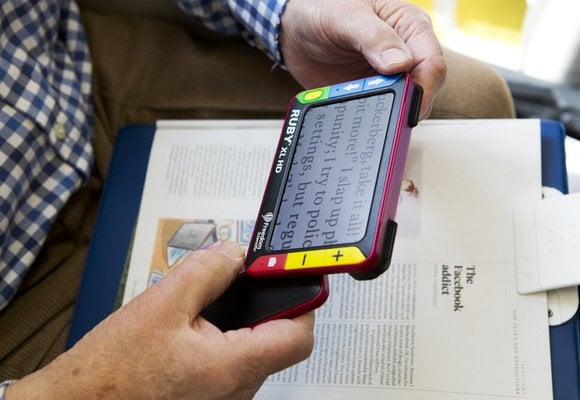Equipment for writing braille
The simplest way to make braille is to use a pointed stylus to push dots into paper.
With standard slates or writing frames the dots are created on the reverse of the paper, meaning the braille has to be written back to front. An upward writing frame makes the dots on the front of the piece of paper you are embossing. This lets you produce braille as you would read the code, from left to right, making it easier to take quick notes.
Mechanical notetaker
The Jot a Dot braille notetaker is a lightweight and portable device, similar to a typewriter. It has six keys (one for each dot in the braille cell), which punch the braille paper. Spaces are created by pinching the two halves of the machine together.
The machine does not require special braille paper – it can produce braille on standard A5 paper and thin labelling materials. It can be used to create quick notes on the move that do not need to be kept for long periods of time.
Mechanical braillers
These are sturdy desktop machines, much like typewriters but with just six keys to produce the characters (one for each dot in the braille cell). There is also a space bar and backspace key.
These machines can be used with a range of materials including special braille paper, Brailon and labelling materials. They are ideal for producing quick throwaway documents as well as material that needs to be stored for a long time and referred back to.
Embossers or braille printers
Embossers print braille output from a computer by punching dots onto paper. They connect to the computer in the same ways as text printers and can also be connected to notetakers and other devices.
Electronic notetakers and braillers
These are portable computers with a braille or QWERTY keyboard that can give speech feedback and allow the user to take notes and make appointments. Some are email and internet enabled. They can also have an integrated braille display.







